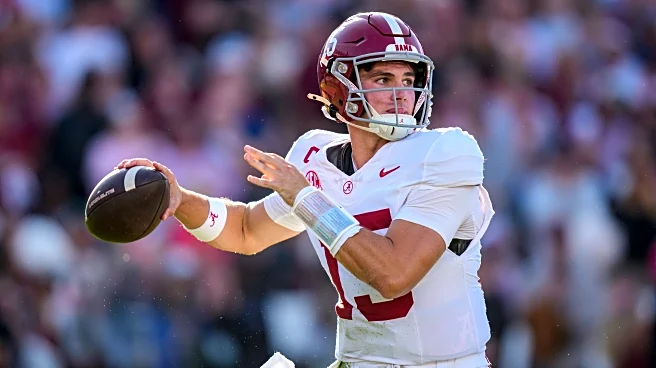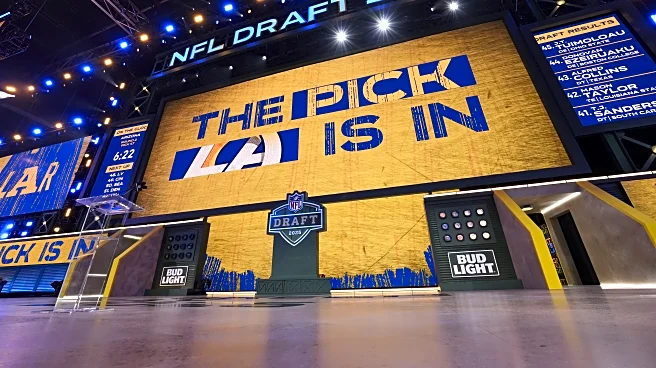What's Happening?
The Cleveland Browns are evaluating their strategy for the 2026 NFL Draft, focusing on whether to prioritize a quarterback or address other key positions such as offensive tackle and wide receiver. With
the NFL trade deadline having passed, the Browns have 18 future picks for 2026 and 2027. The team is considering quarterbacks like Dillon Gabriel, Shedeur Sanders, and Ty Simpson, who have shown potential to fit into the Browns' system. However, selecting a quarterback first could lead to a drop in available talent for other positions. Alternatively, the Browns could focus on strengthening their offensive line and wide receiver corps, with players like Spencer Fano and Carnell Tate being potential picks. The decision will significantly impact the team's future performance, especially in solidifying their offensive capabilities.
Why It's Important?
The Browns' draft strategy is crucial as it will shape the team's competitive edge in the coming seasons. Choosing a quarterback could provide a long-term solution for the team's leadership on the field, but it risks missing out on top-tier talent in other critical areas. Strengthening the offensive line and wide receiver positions could immediately enhance the team's offensive performance, providing better protection and more options for their current quarterbacks. The decision will affect the team's ability to compete in the AFC North and potentially in the playoffs. The Browns' management must weigh the immediate needs against long-term goals to ensure sustained success.
What's Next?
As the draft approaches, the Browns will continue to assess their roster needs and evaluate potential draft picks. The team's performance in the remainder of the 2025 season will also influence their draft decisions. Stakeholders, including fans and analysts, will closely watch the Browns' moves, anticipating how these decisions will impact the team's future. The Browns' management will likely engage in further scouting and analysis to refine their draft strategy, aiming to balance immediate improvements with long-term development.












